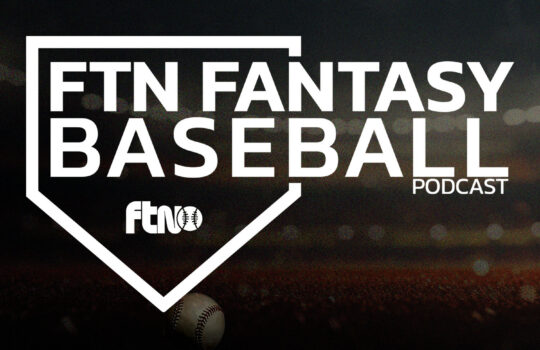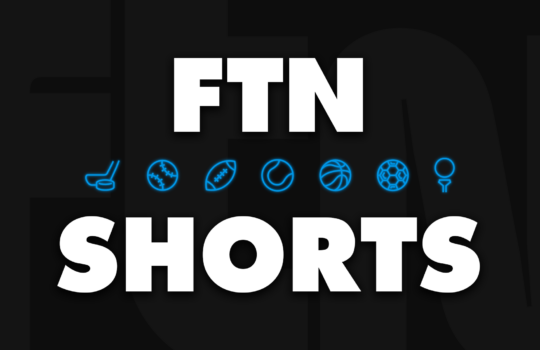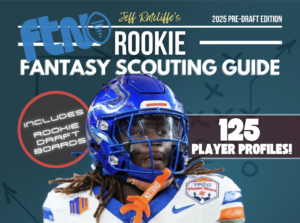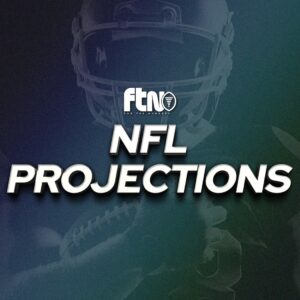
Data in baseball runs deeper and is more comprehensive than in any other sport. These are the 10 stats I find most relevant to Thursday’s DFS slate.
1. The Cubs and Rockies have a combined implied total over 11.5 runs
Despite this, only one hitter from this game, Frank Schwindel, is priced over $5k. Many strong bats are in the $3ks. Consequently, this game will be mega-chalk, but it may be worth trying to stack it in a contrarian way rather than fading it altogether.
2. Kyle Freeland uses five pitches, leading to just a 26% fastball rate (not including sinkers and cutters)
This presents an opportunity to find hitters who benefit from the multiple types of “fastballs.” Cubs who hit cutters and sinkers better than fastballs:
(Build your MLB DFS lineup with our Optimizer!)
3. Justin Steele throws a sinker or slider around 40% of the time, and both pitches in this game lost over a run and a half per 100 pitches (they’re terrible)
Rockies who stand to benefit:
If there’s a reason to fade Colorado bats, it’s that as a whole, they’re a poor fit for Steele’s pitch mix.
4. Casey Mize threw one sinker in his opening start, despite a 22% sinker usage a year ago
This is a drastic change, and it’s potentially a smart one. He lost a run per 100 sinkers, but his fastball was fairly neutral. The matchup with KC is an intriguing one — they have numerous players who struggle against fastballs, crush sinkers and struggle with sliders, Mize’s best pitch.
Mize could be a great option if using multiple chalk stacks.
5. Six pitchers project within 4 DK points of one another in the Strikeout Model
With such little separation in this grouping, the decisions could/should come down to price and ownership. I will, however, note that Kevin Gausman begins to separate from a ceiling perspective with his probabilities of scoring at least 25 and 30 DK points.
6. Shohei Ohtani’s slider is elite, gaining 2.35 runs per 100 pitches
This is noteworthy considering I suggested fading chalk Texas bats Tuesday due to their weakness against sliders (as seen below). While Ohtani doesn’t throw as many of them as Chad Kuhl, his is even better.
7. Kevin Gausman throws splitter around one-third of the time and gains over 2 runs per 100 splitters
The Yankees are a mixed bag against splitters. While the vast majority of their lineup crushes fastballs, only Aaron Hicks, DJ LeMahieu and Josh Donaldson have fared well against the split. Aaron Judge, Giancarlo Stanton and Gleyber Torres have struggled immensely with it.
The decision to use Gausman or not will likely come down to his ownership for me.
8. Luis Severino averaged 97.9 mph with his fastball in his opening start
CSW, or called strikes plus whiffs per pitch, is the best measure of command we have. Historically he has sat just under 30%, but in his opening start, he posted just 21.5%. The stuff however, can’t be questioned, as evidenced by the fastball velocity.
Consider Severino as another viable option to provide enough differentiation alongside two chalk stacks.
(More: Check out Jake Kucheck’s look at the Thursday starting pitching slate in The Opener.)
9. Spencer Torkelson hit 25 home runs in 90 minor league games in 2021
As Zack Greinke’s skillset continues to deteriorate, we can begin to consciously attack him. In fact, the Tigers are third in Kyle Murray’s HR Rater. Torkelson has a .318 wOBA and .235 ISO to begin the season, suggesting he’ll have no trouble continuing his success at the plate despite the jump to the majors.
10. Walker Buehler is projected for just 14.7 pitches per inning
Pitch-per-inning efficiency is incredibly predictive of fantasy success for pitchers, as it has signal for all of command, power/run prevention, and strikeout potential. Buehler’s baseline pitches per inning of just 15.1 is already strong, but it should be magnified by this Cincinnati order. They have the 4th lowest walk rate and 4th lowest OBP so far this season, both of which line up with the historical performance of their individual players.
This projected pitch-per-inning efficiency is the reason Buehler’s projected DK points is first on the slate according to the Strikeout Model.















































 New York Jets
New York Jets  New England Patriots
New England Patriots  Miami Dolphins
Miami Dolphins  Buffalo Bills
Buffalo Bills  Pittsburgh Steelers
Pittsburgh Steelers  Cleveland Browns
Cleveland Browns  Cincinnati Bengals
Cincinnati Bengals  Baltimore Ravens
Baltimore Ravens  Tennessee Titans
Tennessee Titans  Jacksonville Jaguars
Jacksonville Jaguars  Indianapolis Colts
Indianapolis Colts  Houston Texans
Houston Texans  Las Vegas Raiders
Las Vegas Raiders  Los Angeles Chargers
Los Angeles Chargers  Kansas City Chiefs
Kansas City Chiefs  Denver Broncos
Denver Broncos  Washington Commanders
Washington Commanders  Philadelphia Eagles
Philadelphia Eagles  New York Giants
New York Giants  Dallas Cowboys
Dallas Cowboys  Minnesota Vikings
Minnesota Vikings  Green Bay Packers
Green Bay Packers  Detroit Lions
Detroit Lions  Chicago Bears
Chicago Bears  Tampa Bay Buccaneers
Tampa Bay Buccaneers  New Orleans Saints
New Orleans Saints  Carolina Panthers
Carolina Panthers  Atlanta Falcons
Atlanta Falcons  San Francisco 49ers
San Francisco 49ers  Seattle Seahawks
Seattle Seahawks  Los Angeles Rams
Los Angeles Rams  Arizona Cardinals
Arizona Cardinals 









 Boston Celtics
Boston Celtics  Brooklyn Nets
Brooklyn Nets  Philadelphia 76ers
Philadelphia 76ers  New York Knicks
New York Knicks  Toronto Raptors
Toronto Raptors  Chicago Bulls
Chicago Bulls  Detroit Pistons
Detroit Pistons  Milwaukee Bucks
Milwaukee Bucks  Cleveland Cavaliers
Cleveland Cavaliers  Indiana Pacers
Indiana Pacers  Orlando Magic
Orlando Magic  Atlanta Hawks
Atlanta Hawks  Charlotte Hornets
Charlotte Hornets  Miami Heat
Miami Heat  Washington Wizards
Washington Wizards  Denver Nuggets
Denver Nuggets  Minnesota Timberwolves
Minnesota Timberwolves  Oklahoma City Thunder
Oklahoma City Thunder  Portland Trail Blazers
Portland Trail Blazers  Utah Jazz
Utah Jazz  LA Clippers
LA Clippers  Golden State Warriors
Golden State Warriors  Los Angeles Lakers
Los Angeles Lakers  Phoenix Suns
Phoenix Suns  Sacramento Kings
Sacramento Kings  Dallas Mavericks
Dallas Mavericks  Houston Rockets
Houston Rockets  Memphis Grizzlies
Memphis Grizzlies  New Orleans Pelicans
New Orleans Pelicans  San Antonio Spurs
San Antonio Spurs 









